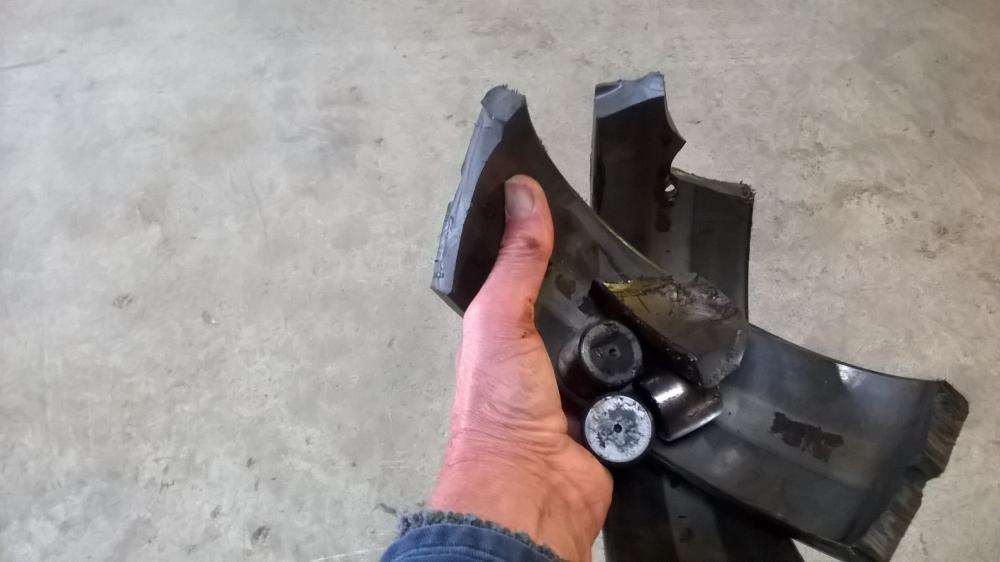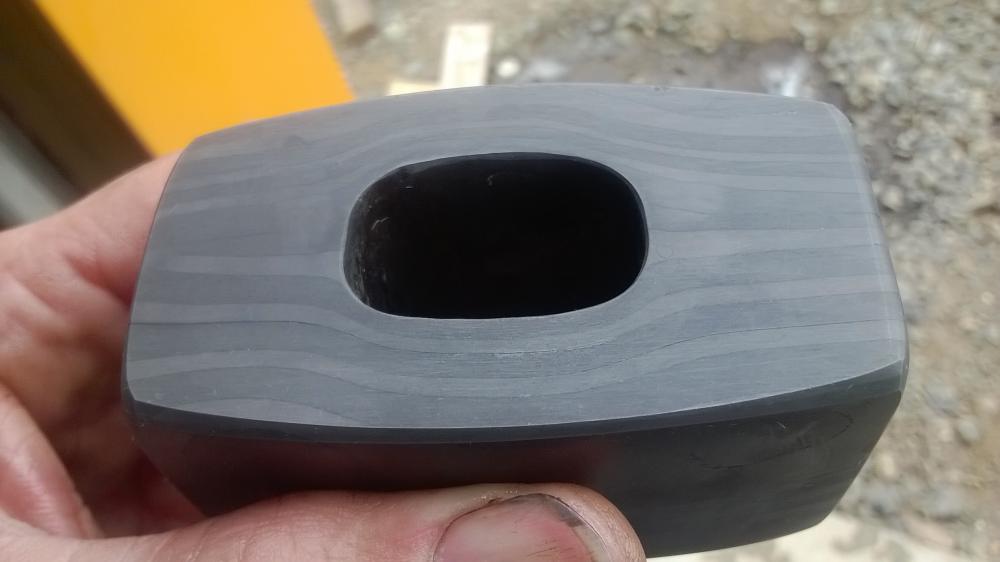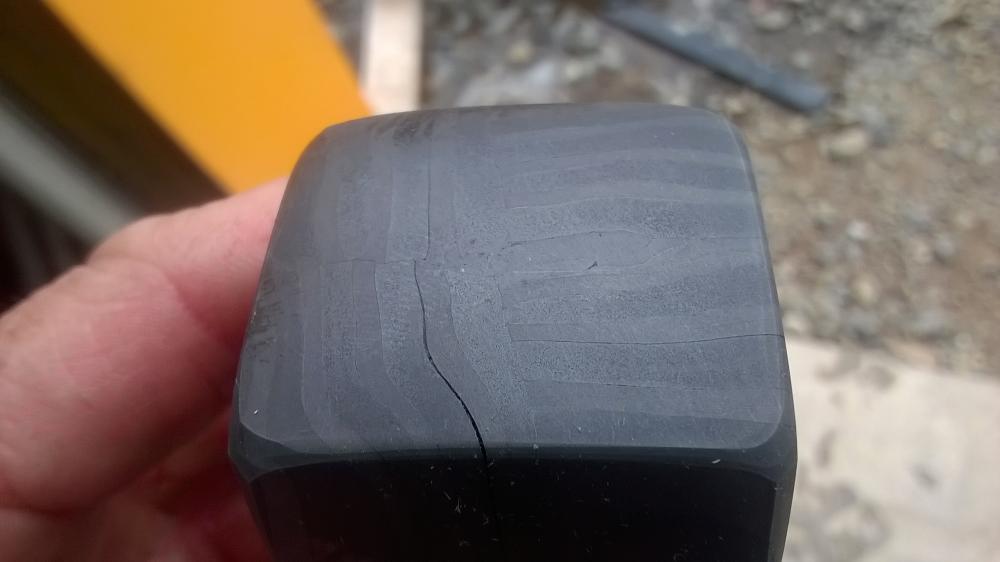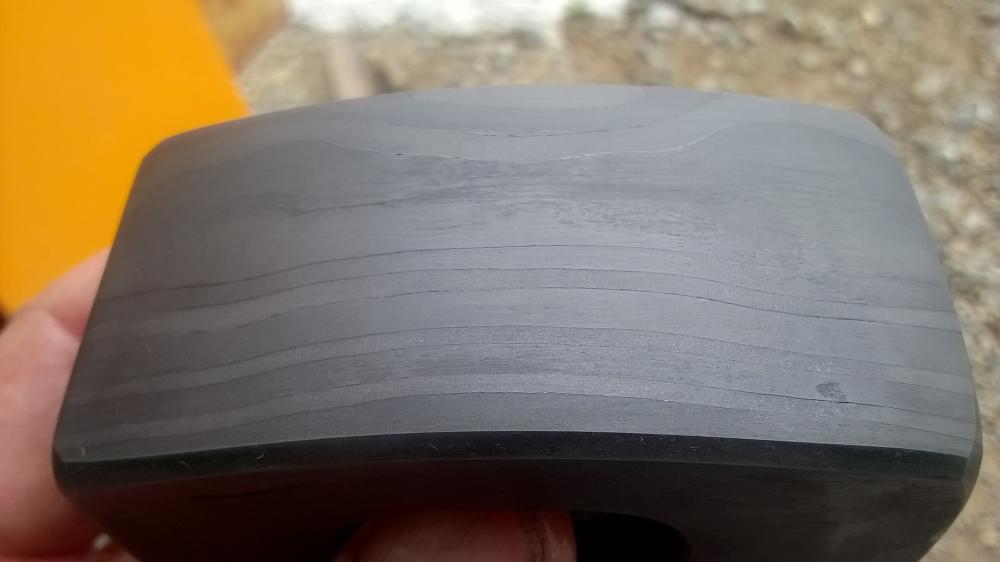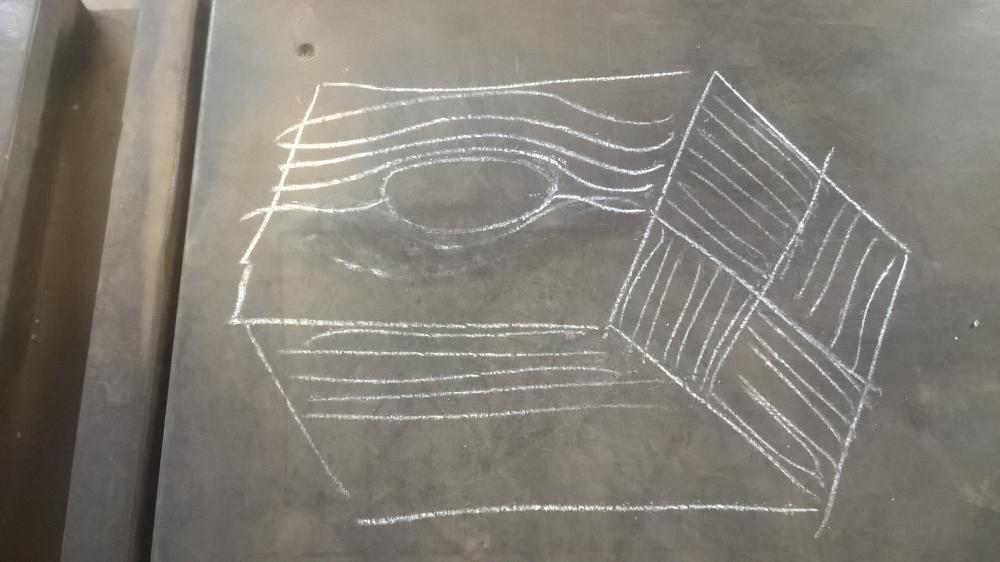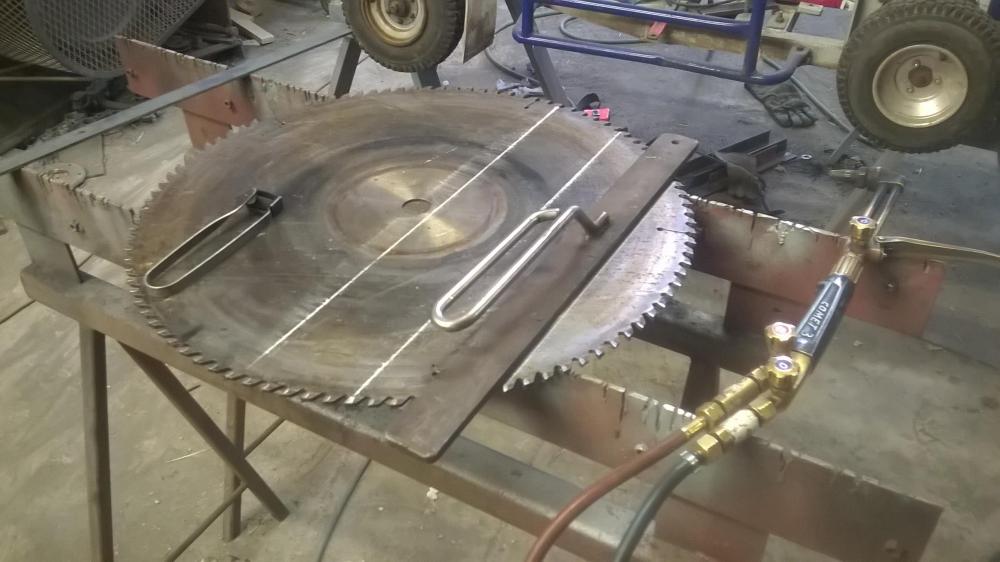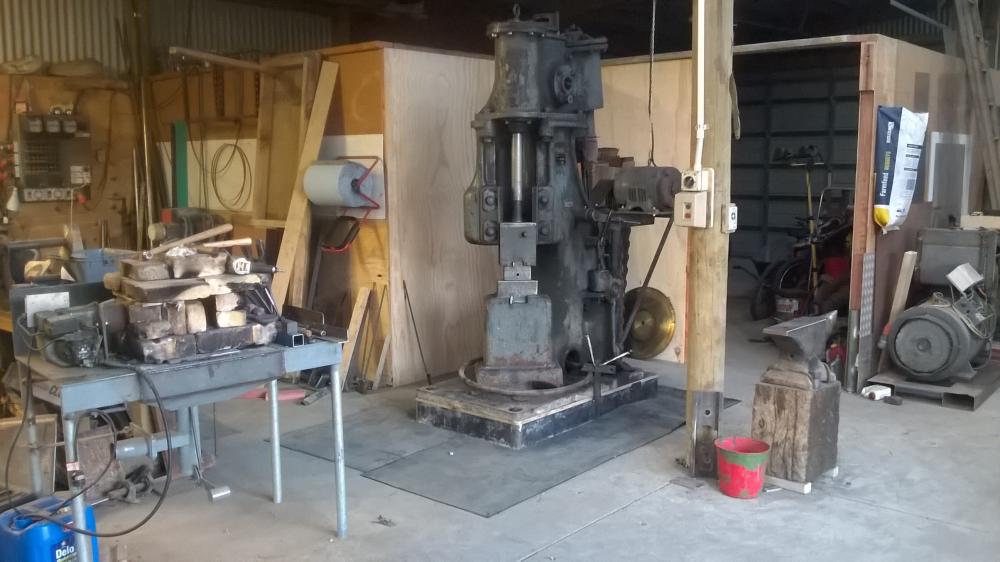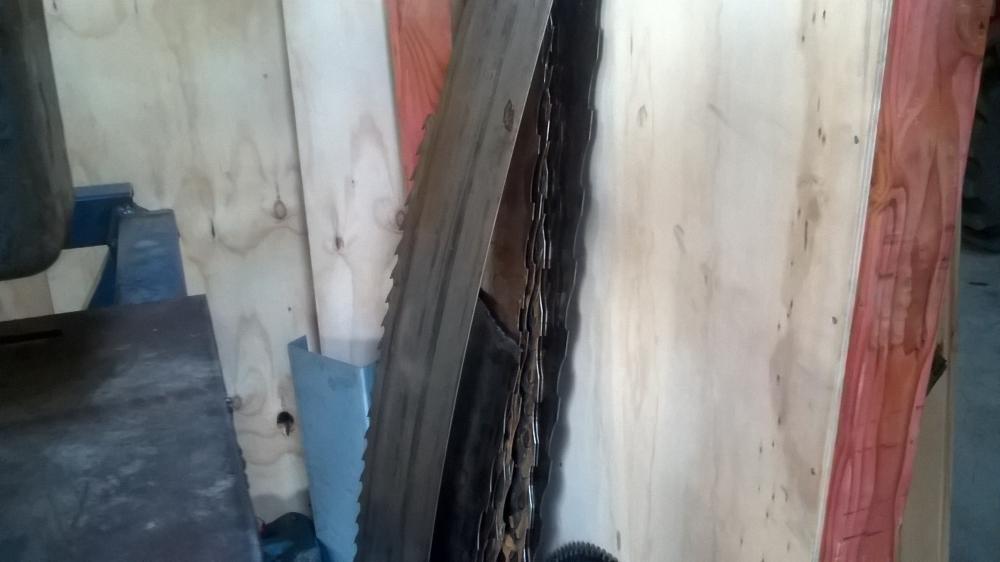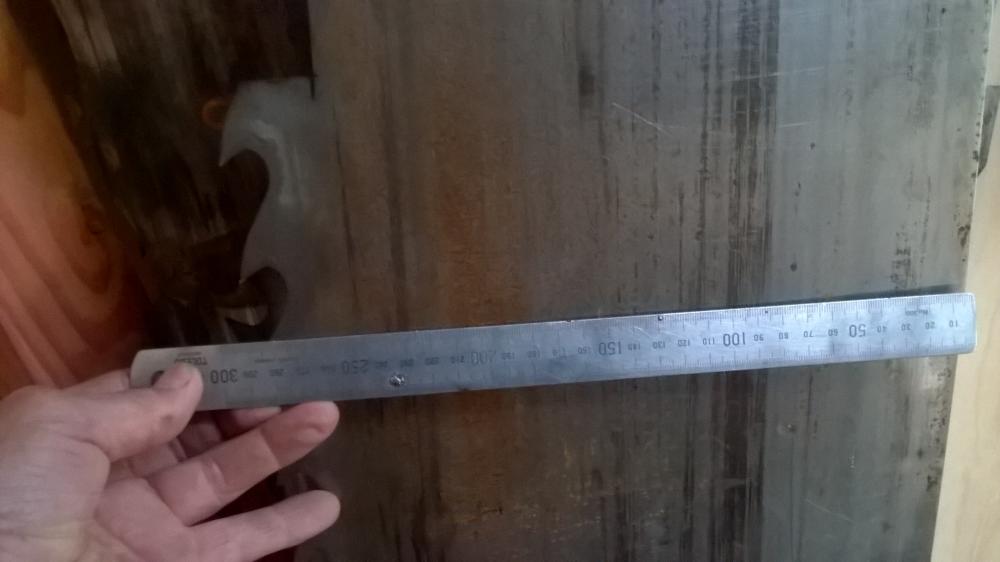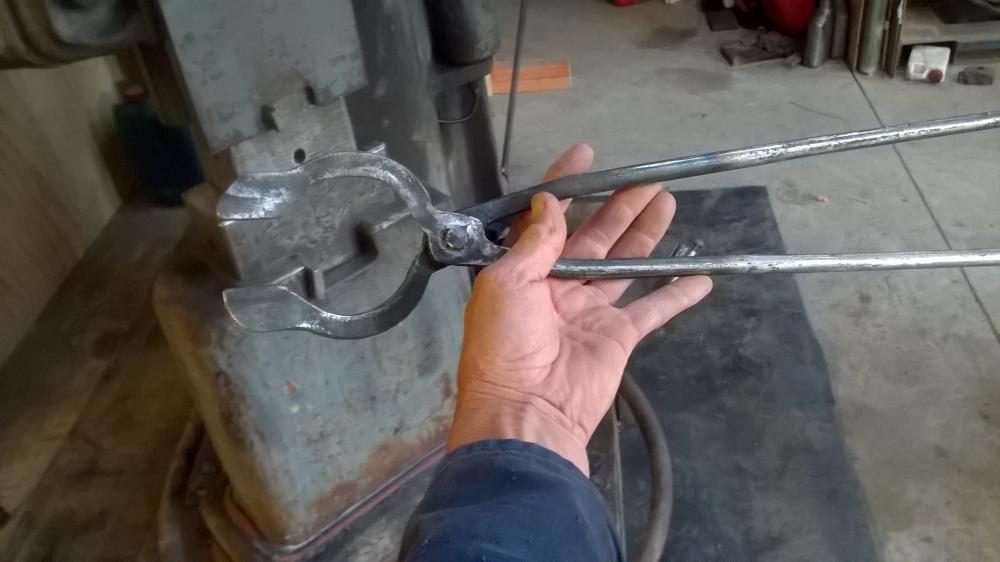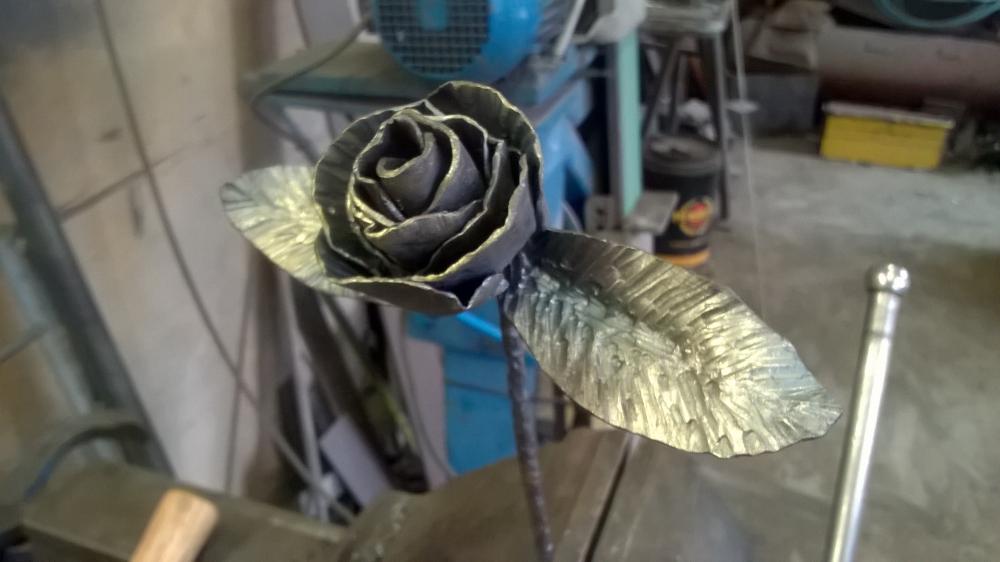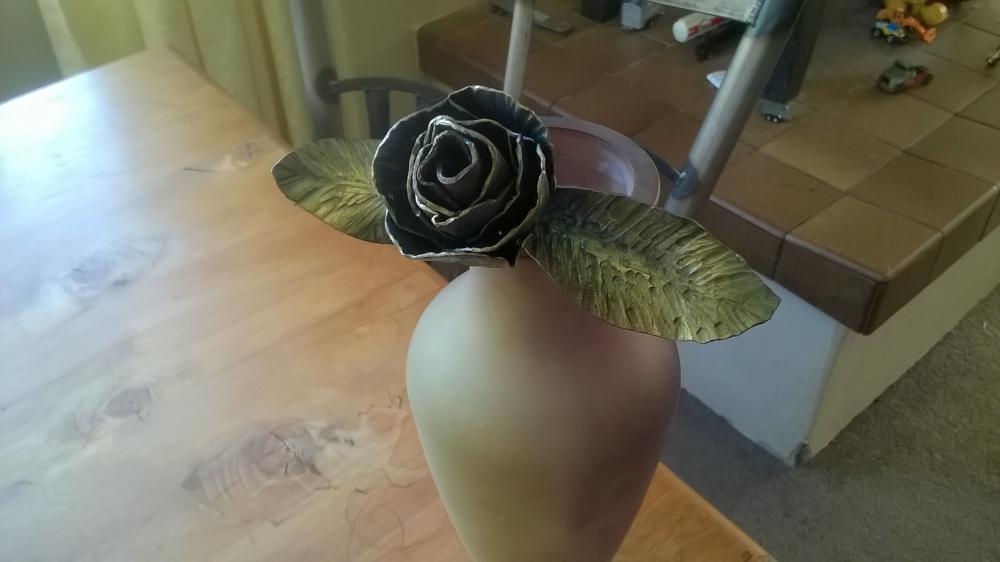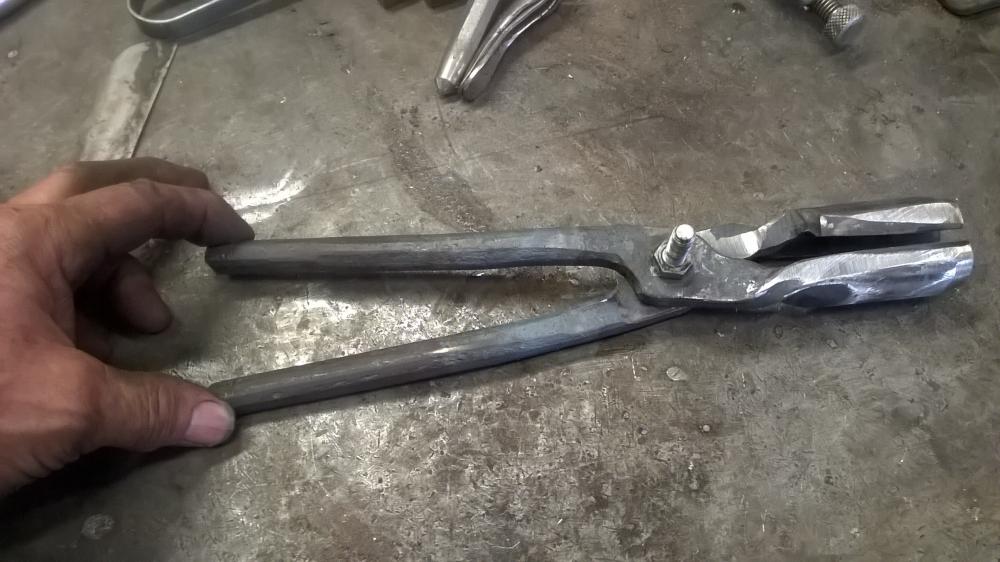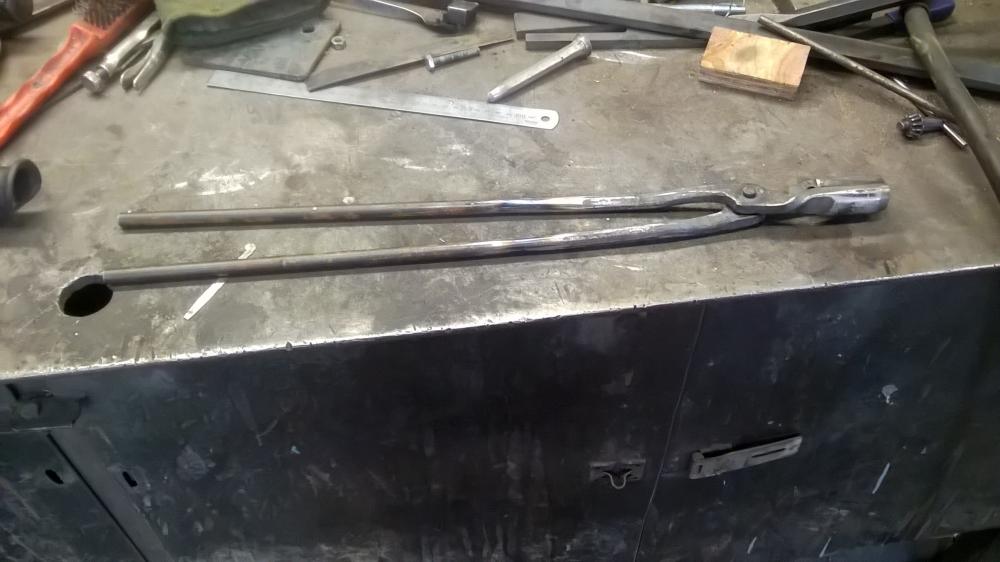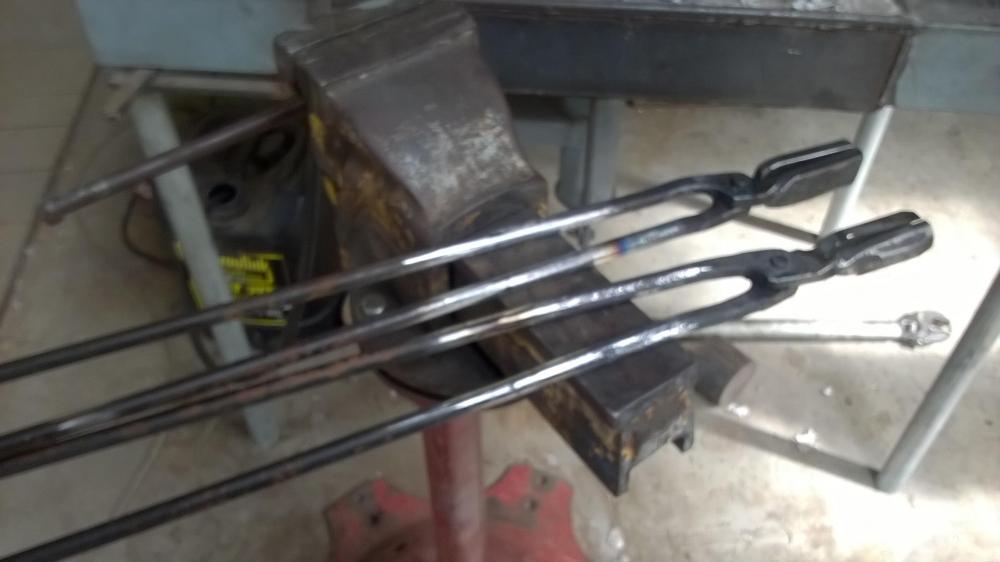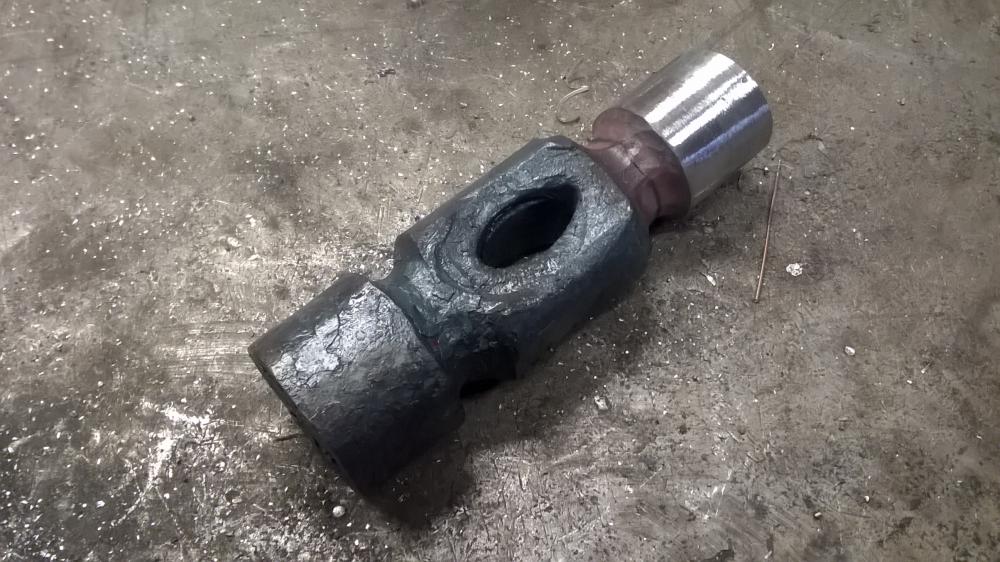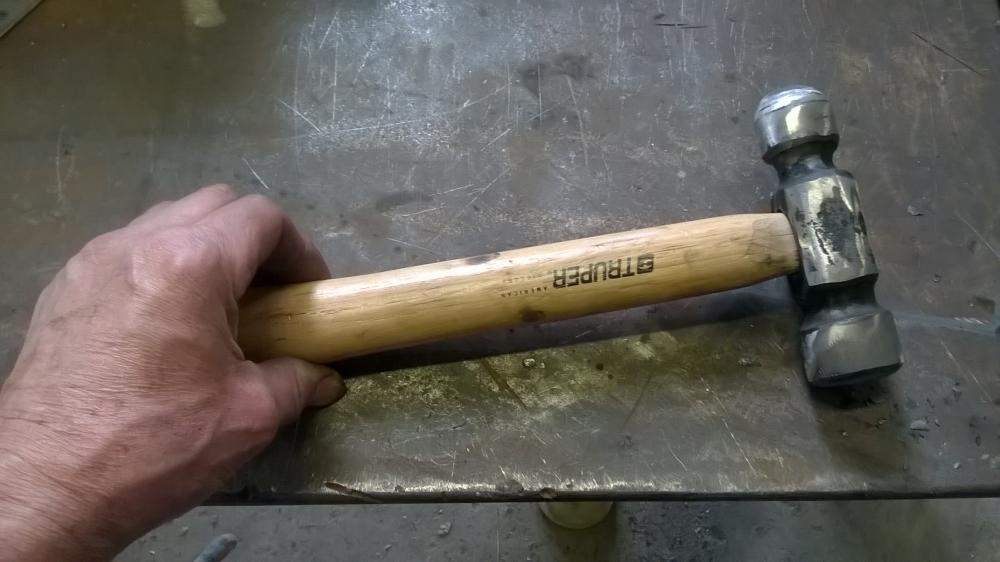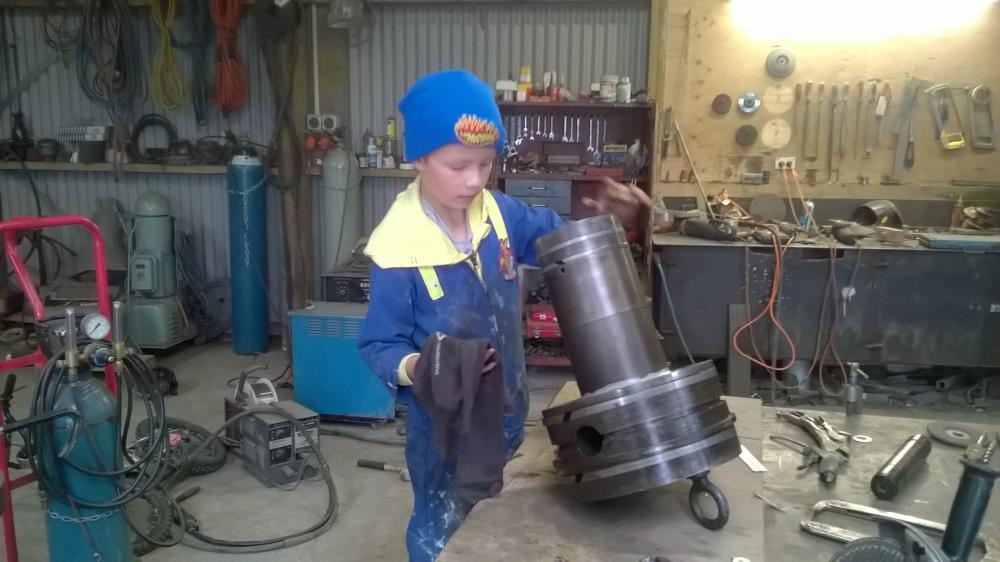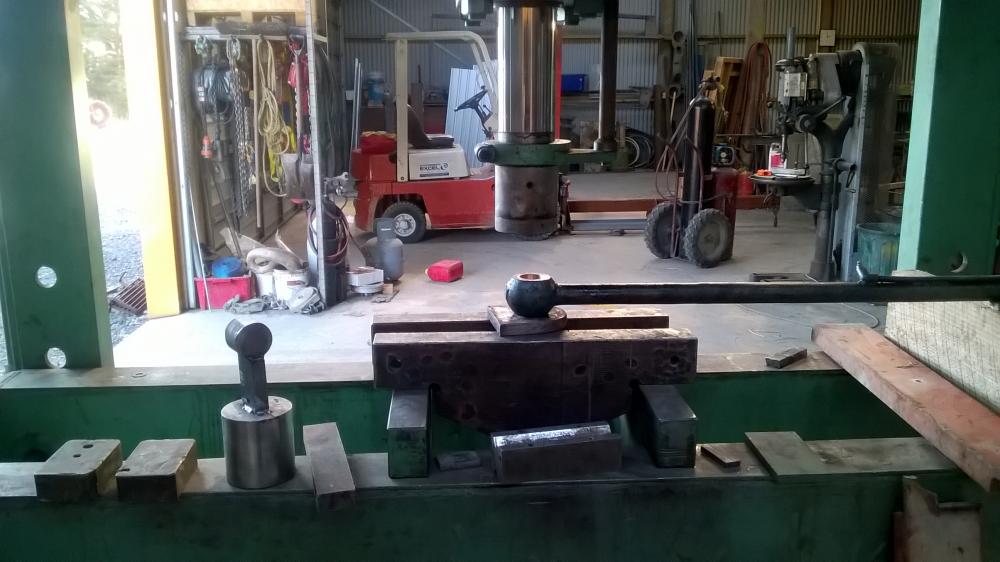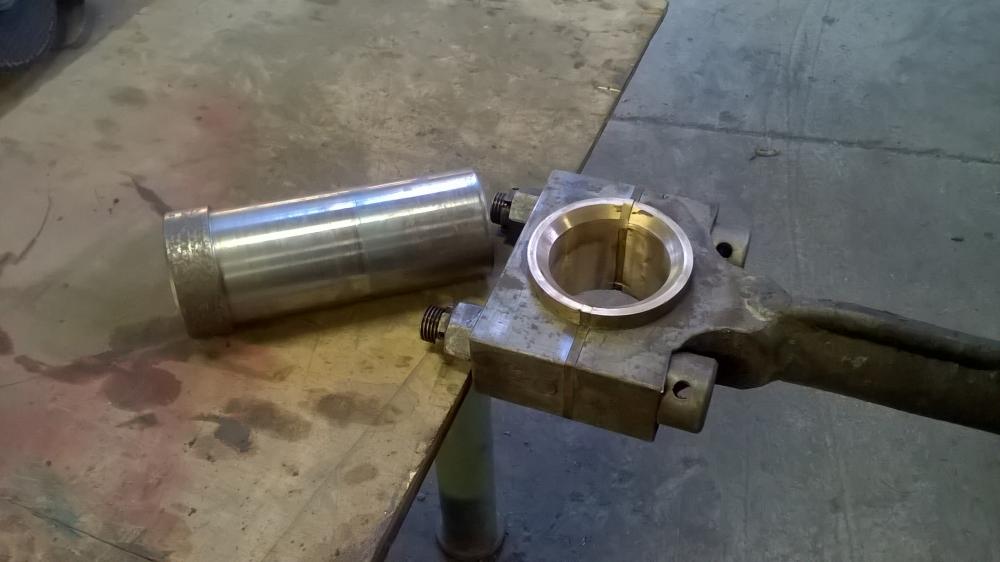
BeaverNZ
Members-
Posts
351 -
Joined
-
Last visited
Content Type
Profiles
Forums
Articles
Gallery
Downloads
Events
Everything posted by BeaverNZ
-
What is the most dangerous tool in your shop?
BeaverNZ replied to Glenn's topic in Tools, general discussion
Yes I agree with Frosty, I gave my self a major scare about two months ago. I was pressing a large bearing 120 I/D ish off a shaft of a slew motor of a 20 tonne digger it was very tight on the shaft. I had about 70 tonnes of force on the shaft and I thought I had the force going to the inner sleeve of the bearing but I hadnt looked properly and it was pressing on the outer race of the bearing and it exploded. Very big bang My wife heard it (house is only about 40 metres away) inside the house and bits of bearing shell and rollers went in all directions That people is how you end up in a Box in the ground Complacency and being in a hurry made me feel a bit sick. Propably the most dangerous thing in the workshop is stored energy whether moving or not things ready to fall, air/gas pressure flamables. The list could go on for ages Flesh is easily damaged fortunatly it wasnt the large pieces but I put them to give an idea of the size of the bearing but the smaller pieces were some of the bits. Im going to forge something out of these one day -
Hammer eye drift steel
BeaverNZ replied to Michael Cochran's topic in Slitters, Punches, Drifts, etc
I have been reading this thread with interest, But just my two cents worth but Sodium is only usually used in the exaust valves of heavy diesel engines like from large trucks earth moving equipment Cheers Beaver -
While it does look like a crushing mill I think it may be a set of mulls and an extrustion mill for making clay tiles and pipes. I have seen machines looking much like this at a place I used to do matainance at Cheers Beaver PS it would make a cool sculpture
-
Determining age of Fisher anvil
BeaverNZ replied to Timeswelding's topic in Anvils, Swage Blocks, and Mandrels
Hey thats a great looking anvi there, People who oxy cut on anvils should be beaten/clubed with a piece of wood mine had a bevel cut mostly along one side when I got it GRRRRRR That I have since repaired- 48 replies
-
- fisher anvil
- eagle
-
(and 3 more)
Tagged with:
-
I am in the work shop today experimenting with forging and I had the thought of using a curcible of borax to heat up a billet for welding and if anyone had tried this. I know the borax would consume the crucible unless it was the correct material it would stop the billet from all oxidation so should result in consistant welds Cheers Beaver
-
I did the all the welds with a 2CWT power hammer which I am learning to use
-
I had my first go at a pattern welded hammer out of 86 kg/m crane rail track which is a 1080 steel with aboutr 1% manganese in it as I have a test cert of that rail and a large circular saw blade which I was hoping may of been a L6ish steel but turns out it is probably just a carbon steel going by the poor contrast and it was a carbide tipped saw . I had a couple of cracks appear during heat treatment and I misslayed to parts making up the billit but it was a success as far as a learning excercise Cheers Beaver
-
One thing to keep in mind is to use the biggest ram spear/shft size as this gives a faster retract speed so more pushes per min with the same pump/hp and a stronger ram that will be less vuernerable to getting bent or kicking something out of the press. The only thing about a fast return speed is more oil returning to the tank so use good sized hoses er on the side of too big, My press has an eighteen HP motor and a 17cc/rev pump if I remeber correctly and the motor is maxed out at 4300 psi it looks a bit funny a great big motor with a tiny pump on the end Cheers Beaver
-
2 CWT Massey power hammer foundations started
BeaverNZ replied to BeaverNZ's topic in Power Hammers, Treadle Hammers, Olivers
The power hammer installation is more or less all finished apart from a door in the wall I have got rid of the dodgy wiring and the magic green button is all connected at last. The second photo is some plunder i have aquired from a local sawmill I want to have a goi at making some pattern welded hammers just because they look so cool and last pic is my last set of tongs and they are the best yet, I havent put up any pics of additions to the scrap bin of which there has been plenty, Offerings to the gods of forging. I intend to put up racks along the side and back wall of the hammer to hang my tooling on to keep it all tidy and accessible. My forge that I have been using is a diesel heater burner and a pile of bricks on top of a coal forge that I dont currently use just to cut down on the amount that I have to learn at once. I just need to make and fit the belt guarding, the stop for the foot pedal so I can use my vice grips again and maybe a bit of paint. I found out a few days ago where my hammer oridginally came from in its working life, It was the Invercargill railway work shop back when New Zealand used to make its own equipment But dont get me started on that subject. Cheers Guys for taking interest in my project hope its been of some help to some one -
can we agree to disagree?
BeaverNZ replied to SReynolds's topic in Blacksmithing, General Discussion
I remember when in one of my apperenticeship classes thousands of years ago the tutor stating that brine has a faster qench because a saturated solution is alcaline and helps remove the scale from the surface of the item aiding the cooling rate. I wonder if any one has any borderline carbon steel that will only partially harden and try both and see what works better -
Welding an anvil down?
BeaverNZ replied to jpfabricator's topic in Anvils, Swage Blocks, and Mandrels
Yes that was a good one Cheers -
First forged rose for Valentines day
BeaverNZ replied to BeaverNZ's topic in Metal Sculpture & Carvings
The rose took two hours to make, I cut the discs for the petals out of 1.6mm sheet witha hole saw and then guessed and cut four slots in towards the centre tacked it onto a 6mm rod and used a cross pein hammer to draw the petals from a 1/4 out to a 1/2 circle then just bent them around with a pair of long nosed pliers. I used the oxy acet torch for my heat source. LOL not much chance of a frost yet its been too wet summer is two months over due -
Nice work Das Im not sure if I have enough imagination to come up with stuff like that but need to do some more practice. An easy way to convert small imperial to metric is one mm is 39 thou 0.9 wire is 35 thou
-
-
The number of rams used in your press does not effect the tonnage produced, the tonnage is from the TOTAL AREA of the ram or rams pistons pushing in the direction of the load and the pressure of the oil pumped. the speed comes from the volume of oil pumped. You could get thousands of tons from a 1/4 hp motor power pack but it would be extremely slow, thats just a silly example.Tonage and speed require Hp Cheers Beaver
-
Started Building a Ray Clontz Tire Hammer
BeaverNZ replied to zadvorney's topic in Power Hammers, Treadle Hammers, Olivers
Looking good Just a comment to try and help,When using your Mig dont try to do runs that are too big in one pass. You are better to do several runs to get the sized fillet you need, Runs that are too big for the amps/volts are a very common welding fault and results in a lack of fussion and I would recommend using a Stick welder to weld the heavyer section of plates if your Mig is only a small one. Keep up the good work Cheers Beaver -
2 CWT Massey power hammer foundations started
BeaverNZ replied to BeaverNZ's topic in Power Hammers, Treadle Hammers, Olivers
Hi Alan Yes the valve does give a neutral but I have got a stop on the foot bar to hold it so the tupp cycles as I find the way the machine has the clamp action between the hold up and cycling a pain. With the hammer this way it gives an action more like a clear space and i have a very heavy industrail power supply so starting current dosnt matter as I get the machine set up better I intend to have a stop that hinges so i can easily hold the foot bar in either position, at the moment i have it held with vise grips. With your doors moving just shows how powerful resonance is. Just for others interest/information the hammer takes about 8.5 Hp to run the motor is a ten Hp and the makers plate says 15 amp at rated load the motor draws 12.5 amps Ive measured it with a clamp meter, The hammer runs slightly faster at 216 bpm instead of 202 as per makers plate Cheers Beaver -
2 CWT Massey power hammer foundations started
BeaverNZ replied to BeaverNZ's topic in Power Hammers, Treadle Hammers, Olivers
https://www.youtube.com/watch?v=oSlrVPxcrkk&t=2s Here is a video of the hammer running now showing how fine the control of the hammer is, it runs nicely now since the bearing knock has been fixed. If I was doing the inertia block again I think I would make it bigger as the size i made it was the recommended 1200x1200x2000 of concrete which is around 7500 to 8000 Kg and there is quite a bit of shock felt in the inertia block. The timber does a good job of dampening the shock and can only be lightly felt when giving the hammer full Jandle (thats a bit of NZ / Aust slang for flat out). There is almost 19 to 20 tons of concrete and machine sitting here counting the pit lining as well. Cheers Beaver -
2 CWT Massey power hammer foundations started
BeaverNZ replied to BeaverNZ's topic in Power Hammers, Treadle Hammers, Olivers
Im loving this power hammer made my first tongs, Think Im addicted is there any hope for me or am I doomed to the pages of IFI. I cheated and only drew out half of the reins Im all for doing it the easy way -
Dupont type hammer linkage
BeaverNZ replied to nonjic's topic in Power Hammers, Treadle Hammers, Olivers
Hi John Could you measure up an existing machine and just scale it to get the sized machine you want? Cheers Beaver -
2 CWT Massey power hammer foundations started
BeaverNZ replied to BeaverNZ's topic in Power Hammers, Treadle Hammers, Olivers
Its just a good old phosphor bronze bush and yes this is why I like older machine tool stuff is its made to be easily fixed if you do manage to wear it out in the first place, luckly the crank pin had almost no wear at all and cleaned up nicely with emery tape -
2 CWT Massey power hammer foundations started
BeaverNZ replied to BeaverNZ's topic in Power Hammers, Treadle Hammers, Olivers
I have done my very first forging with a power hammer it is a 1045 ball pein hammer for my son its his very first metal working hammer Im doing every thing I can to make sure he is doomed to dirt bikes and things mecanical, the hammer ball end isnt cracked it is a lamination rolled down, Then I put my minion to work cleaning the dirt off the piston of the hammer next picture is me pressing the small end bush in and last is the process of resizing the big end by taking quite alot off the spacers between the bearing shells and using a mandrel the same size as the crank pin with a step up to the size that gives me 0.12mm of clearance or 5 thou that took me ages using bearing blue and a fine flap wheel the hammer runs real nice now -
2 CWT Massey power hammer foundations started
BeaverNZ replied to BeaverNZ's topic in Power Hammers, Treadle Hammers, Olivers
Phil Excellent thanks for that I pulled out the pump piston today to fix the bearing clearances thats a good tip about the small end bush though the small end is sort of pressure feed from the air pressure and oil mist . The big end bearing had about 2.5mm clearance and the small end about 1mm so I am resizing the bottom and making a new bush for the small end, the rod seal leaks fairlybadly as well what can you suggest for that, it looks like a graphite impregnated rope seal probably asbestos so will have to be careful removing it I was wondering about a teflon seal in its place. -
I know from personal experience that one of the most difficult things of working for yourself is making the break from a steady and secure job and becoming responsible for your own destiny and standing or falling own your own merits. All I can say is if you really want to do it go ahead as others have said you are not taking the decistion lightly , I always say to someone here to put aside about 25 to 30 percent of your gross income for the first year for tax as most businesses fail in the second year due to tax payments. So go for it if thats your passtion and dont wait until you are old and in a rest home wishing you had whats the wost that can happen. What Glen and Thomas said is very true as well be carfull of over comitment as well. Hope this helps Chears Beaver
